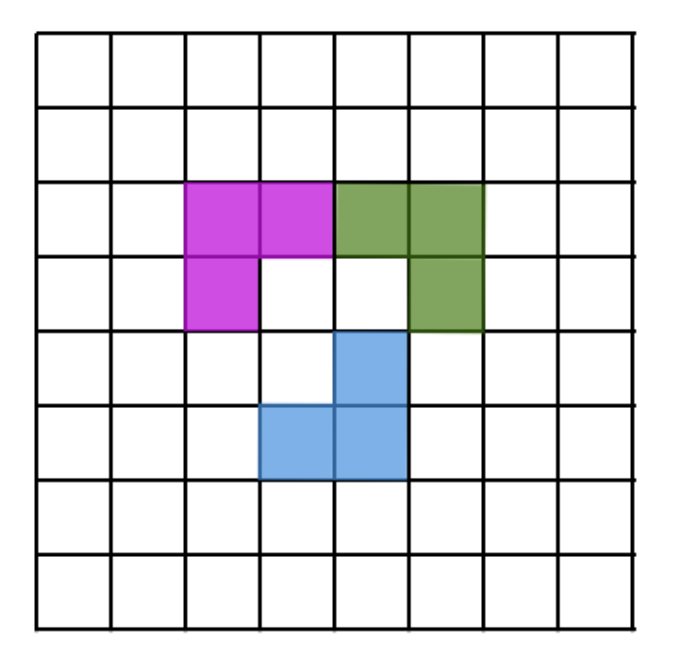Problems
With a red marker, Margaret marked three points with integer coordinates on a number line. With a blue marker, Angelina marked a midpoint for every pair of red points. Prove that at least 1 of the blue points has an integer coordinate.
Alice took a red marker and marked 5 points with integer coordinates on a coordinate plane. Miriam took a blue marker and marked a midpoint for each pair of red points. Prove that at least 1 of the blue points has integer coordinates.
A teacher filled the squares of a chequered table with \(5\times5\) different integers and gave one copy of it to Janine and one to Zahara. Janine selects the largest number in the table, then she deletes the row and column containing this number, and then she selects the largest number of the remaining integers, then she deletes the row and column containing this number, etc. Zahara performs similar operations, each time choosing the smallest numbers. Can the teacher fill up the table in such a way that the sum of the five numbers chosen by Zahara is greater than the sum of the five numbers chosen by Janine?
We are given a convex 200-sided polygon in which no three diagonals intersect at the same point. Each of the diagonals is coloured in one of 999 colours. Prove that there is some triangle inside the polygon whose sides lie some of the diagonals, so that all 3 sides are the same colour. The vertices of the triangle do not necessarily have to be the vertices of the polygon.
We are given a table of size \(n \times n\). \(n-1\) of the cells in the table contain the number \(1\). The remainder contain the number \(0\). We are allowed to carry out the following operation on the table:
1. Pick a cell.
2. Subtract 1 from the number in that cell.
3. Add 1 to every other cell in the same row or column as the chosen cell.
Is it possible, using only this operation, to create a table in which all the cells contain the same number?
A target consists of a triangle divided by three families of parallel lines into 100 equilateral unit triangles. A sniper shoots at the target. He aims at a particular equilateral triangle and either hits it or hits one of the adjacent triangles that share a side with the one he was aiming for. He can see the results of his shots and can choose when to stop shooting. What is the largest number of triangles that the sniper can guarantee he can hit exactly 5 times?
A game of ’Battleships’ has a fleet consisting of one \(1\times 4\) square, two \(1\times 3\) squares, three \(1\times 2\) squares, and four \(1\times 1\) squares. It is easy to distribute the fleet of ships on a \(10\times 10\) board, see the example below. What is the smallest square board on which this fleet can be placed? Note that by the rules of the game, no two ships can be placed on horizontally, vertically, or diagonally adjacent squares.

On an 8×8 grid (like a chessboard), an L-corner is a shape made of 3 little squares of the board that touch to make an L. You can turn the L any way you like. We place the L-corners so that none overlap. What is the fewest L-corners you must place so that no more L-corners can be added anywhere? Here is an example of how three L-corners may look like:

10 children, including Billy, attended Billy’s birthday party. It turns out that any two children picked from those at the party share a grandfather. Prove that 7 of the children share a grandfather.
101 random points are chosen inside a unit square, including on the edges of the square, so that no three points lie on the same straight line. Prove that there exist some triangles with vertices on these points, whose area does not exceed 0.01.